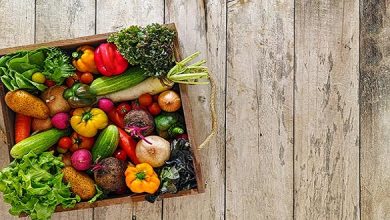5 Common Problems in Vegetable Gardens and How to Treat Them

In spring, you started seeds and watched them grow. You then fertilized, watered and staked the plants. Your head was filled with visions of summer salads and homemade pickles.
One day, you were confronted by black blotches and yellow-spotted leaves, and your dreams became nightmares.
Many gardeners love to tend their plants, but they are often destroyed by unknown forces.
Fear not! Here are five tips to identify and treat the most common diseases that can threaten your crops.
ANTHRACNOSE
Anthracnose is a fungal disease that can affect beans, cucumbers eggplants, melons and tomatoes as well as pumpkins, squash, pumpkins, and spinach. Anthracnose is a mild form of yellow halos on the leaves that slowly darkens and covers entire leaves. Cucumber plants may lose their leaves and whole vines could die. As peppers and tomatoes mature, they develop sunken, dark spots. Dark lesions can mar pea pods. On melons, round, sunken yellow spots develop, eventually turning to brown, then black.
Rotating crops, amending soil with compost prior to planting, and then applying mulch afterwards can help prevent this. When possible, look for resistant varieties. Avoid excessive watering. This can cause leaf damage and encourage fungal growth. Keep the soil free of any infected plant parts or fallen fruits.
Follow the safety precautions and instructions on the package to treat infected plants using a fungicide that contains copper or chlorothalonil.
BLOSSOM END ROOT
Calcium deficiency, which is most common in tomatoes, eggplants and peppers. The disorder is characterized by dark, mushy areas on the bottom of fruit. It usually results from poor watering, soil pH, injury to roots, or excessive nitrogen.
You can prevent this by testing the soil’s pH prior to planting. Dolomitic lime should be added to beds if pH results fall below 6.3.
Install stakes and cages around tomatoes when they are ready to be planted. This will prevent damage to the roots. Don’t plant your vegetable garden near fertilizer-treated lawns. This can increase the nitrogen content of the soil.
Apply a calcium spray to the affected plants until it drips off. Treatment is generally painless, but sometimes it is necessary to apply a second application.
WILT DISEASES
Fusarium wilt and verticillium are soil-borne fungal diseases that cause similar symptoms.
The diseases affect tomatoes, eggplants, peppers potatoes, pumpkins, tomatoes and potatoes. They also affect roots. Whole plants eventually wilt and then die.
In this instance, a good offense is better than a bad defense. Avoid infection by planting resistant varieties. Keep infected plants free from susceptible species for at least three to four years. This will effectively starve the disease-causing organisms from the soil. Regularly clean up fallen leaves, fruits, and other plant debris.
SQUASH VINE BRORER
Squash, cucumber, and muskmelon plants quickly die after they have bloomed, with no sign of a goodbye. If you look carefully, you will see tiny puncture holes in stalks and stems made by these pests. These pests are moths who lay eggs at the plants’ base. The caterpillars are white, one-inch long and can bore into the stalks and kill plants. Just when you think they are done, they cocoon in soil and come back next year, ready to do more damage.
You can prevent damage by closely monitoring the plants that are susceptible. Early in the season, look out for oval, red eggs. Pick them up by hand. Continue hunting each week.
If you notice signs of damage such as punctures or frass, their sawdusty-like excrement and abrasions, you can use a razor to cut the stems near the holes. Then, manually remove the borers. To encourage root growth, cover the slits in mounded soil.
You can treat your plants with Bacillus Thauringiensis (or Bt), a bacterial pesticide. There are several versions; look for the one that is labeled to control squash vine borer.
SLUGS
Slug damage is indicated by jagged holes in the leaf center rather than at the edges. The slimy trail is left behind by nocturnal gastropods that eat basil, cucumbers and tomatoes as well as ornamental plants such hostas.
Avoid creating a paradise for the slithering miscreants by performing a spring cleanup. Remove leaves, plant debris, and slug eggs from the soil surface. Keep mulch at 3 inches.
Last word
Place a small can of beer in the soil around the plants. Slugs can crawl in to get a drink, and then drown. Alternately, if your children aren’t too scared, you could go into the garden during feeding time (overnight), and sprinkle salt on your little friends. Slugs will die as their bodies try to displace the irritant. Don’t sprinkle salt on plants. This could cause soil damage.





